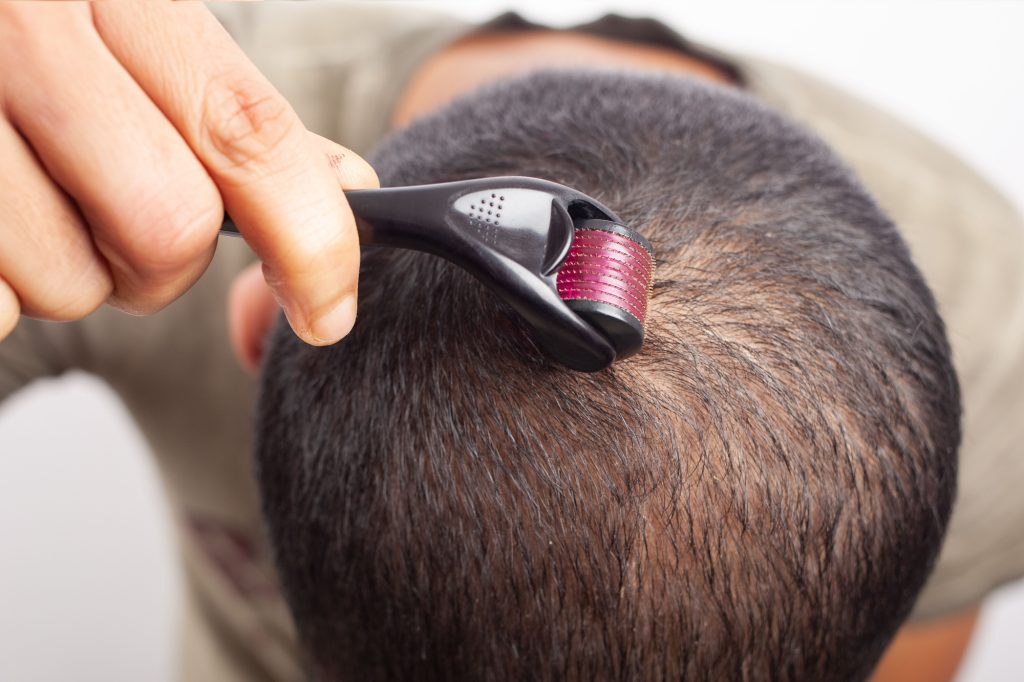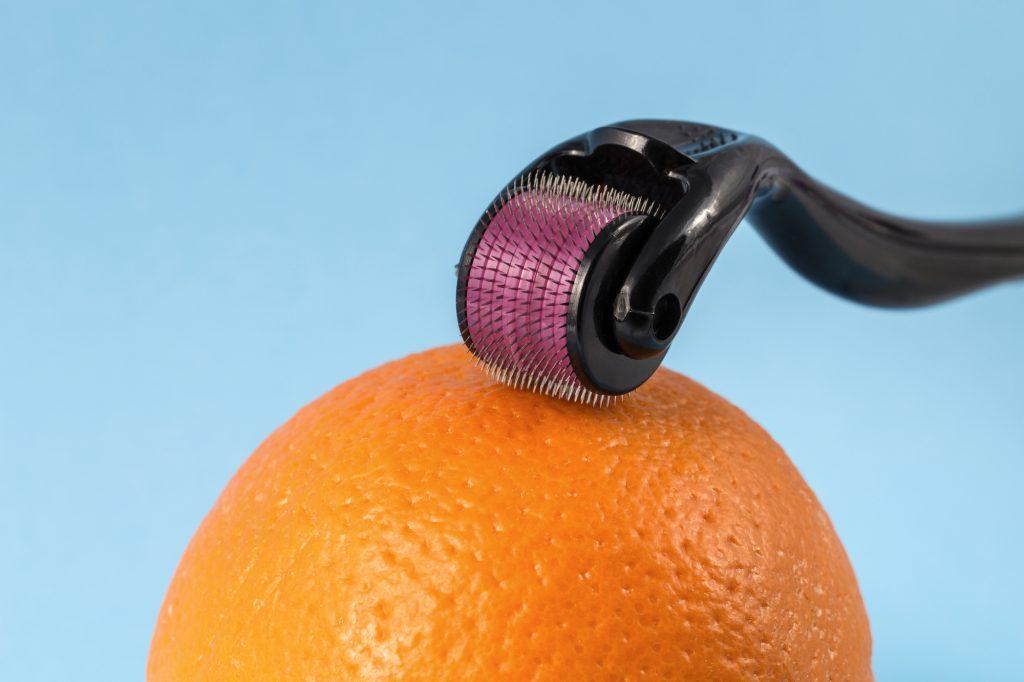
Hair loss is a common concern for many individuals, and various treatments are available to address this issue. One innovative approach gaining popularity is microneedling for hair loss. This procedure, originally known for its skincare benefits, has shown promise in promoting hair growth. In this blog post, we will delve into the world of microneedling and explore its efficacy in addressing hair loss concerns.
What Is Microneedling for Hair Loss?
Microneedling, also known as dermaroller, involves the use of a device with tiny needles to create micro-injuries on the skin’s surface. Originally designed for cosmetic purposes, microneedling has found its way into the realm of hair restoration, offering a potential solution for individuals grappling with hair loss.
How Microneedling Works
The microneedling process triggers the body’s natural healing response, stimulating the production of collagen and elastin. These proteins are crucial for maintaining skin elasticity and health. When applied to the scalp, microneedling has the potential to improve blood circulation, increase nutrient supply to hair follicles, and activate dormant follicles. When used in conjunction with other methods for treating hair loss, dermaroller has demonstrated promising results in promoting hair growth.
An investigation on the effectiveness of microneedling therapy in conjunction with minoxidil for hair thinning was published in the International Journal of Thrichology. In 80% of the individuals, the results demonstrated a 50% improvement in hair regrowth. Therefore, early instances of androgenetic alopecia may respond well to scalp microneedling and topical minoxidil.
Microneedling treatments can alleviate the symptoms of some hair loss illnesses, like androgenetic alopecia and alopecia areata, but they won’t help those who have permanent hair loss. In such situations, a FUE hair transplant is your only option.
How Does Microneedling For Hair Loss Work?
Microneedling for hair loss involves using a specialized device with fine needles to create controlled micro-injuries on the scalp. These micro-injuries stimulate the release of growth factors and increase blood flow to the hair follicles. The enhanced circulation encourages the delivery of essential nutrients to the hair follicles, promoting hair growth and thickness.
A microneedling treatment, in a nutshell, aims to promote hair growth by increasing blood flow to the scalp. Microneedling works wonders on thinning hair and hair loss when used in this way. Hair regrowth may even be encouraged in certain instances.
The microscopic needles prick the scalp just enough to increase blood flow. Your hair follicles receive more oxygen and nutrients as a result of the increased blood flow, which promotes healthy hair development.
As an added bonus, microneedling can boost the absorption of other hair regeneration therapies, which is a major plus. This can speed up the absorption rate of the following therapies by penetrating the outermost layer of skin:
- Platelet-rich plasma treatment with extra growth factors
- Reduce Hair Loss with Minoxidil
- Treating Hair Loss with Azelaic Acid
Therefore, microneedling should be considered alongside other hair loss therapies if the goal is to strengthen and thicken the hair follicles.

How Big Are the Needles?
The size of the needles used in microneedling for hair loss typically ranges from 0.25 to 1.5 millimeters. These needles are carefully selected to ensure they penetrate the scalp’s surface without causing significant discomfort. The size of the needles is crucial in achieving the desired therapeutic effect while minimising any potential side effects.
How Effective is Microneedling at Promoting Hair Growth?
Several studies have explored the effectiveness of microneedling for hair loss, and while research is ongoing, initial findings are promising. A 2013 study published in the “Journal of Cutaneous and Aesthetic Surgery” reported that microneedling is a safe and effective treatment for androgenetic alopecia, a common form of hair loss.
What Are the Other Benefits of Microneedling?
Apart from promoting hair growth, microneedling offers additional benefits for the scalp and overall skin health. It can improve the absorption of topical medications, enhance the effectiveness of hair growth products, and contribute to a healthier scalp environment.
To put it briefly, microneedling can aid in hair growth. It accomplishes this by:
Stimulation of Hair Follicles: The process of microneedling produces microscopic wounds on the scalp, which may set off the body’s natural healing process. It is thought that this procedure stimulates the synthesis of cytokines and growth factors that support the health of hair follicles and stimulate hair regrowth.
Enhanced Blood Circulation: The micro-damages caused by microneedling may also result in better blood flow throughout the scalp. Increased oxygen and nutrition delivery to hair follicles through improved blood flow may promote hair growth.
Enhanced Absorption of Topical Treatments: Topical hair growth products like minoxidil can be better absorbed when applied with microneedling. These products may penetrate the scalp more efficiently by forming microscopic channels, which could increase their efficacy.
What Shall I Expect After My Microneedling Treatment?
After a microneedling session, individuals may experience mild redness and irritation on the treated area. These side effects are usually temporary and subside within a few days. Patients are advised to follow post-treatment care instructions provided by their practitioners to optimize results and minimize any discomfort.
Microneedling is a great way to improve the health of your scalp, but the potential side effects might be difficult to understand. Knowing what microneedling is and isn’t supposed to do is crucial.
In the days following your treatment, you may encounter the following side effects:
- Swelling
- Bleeding or mild pain
These side effects are frequently felt in the area of the skin that has been treated with microneedling. This is, in fact, the goal. For absorption and wound healing to occur, it is necessary to break the top dermal layer.
What Are the Side Effects of Microneedling?
While microneedling is generally considered safe, there are potential side effects, including redness, swelling, and bruising. If it is done by a beauty centre or a clinic, It’s essential to choose a qualified and experienced practitioner to minimise the risk of adverse reactions. Individuals with certain medical conditions or skin issues should consult with their healthcare provider before undergoing microneedling.
Is Microneedling for Hair Loss Worth It?
The decision to undergo microneedling for hair loss depends on individual preferences, expectations, and medical considerations. While research suggests its effectiveness, results can vary from person to person. Consulting with a qualified healthcare professional or dermatologist can help determine if microneedling is a suitable option based on the individual’s specific needs and medical history.
Clinical trials combining microneedling with other therapies for hair loss have demonstrated some promising outcomes. Topical therapies such as platelet-rich plasma (PRP) and minoxidil (Moxidil) are absorbed more quickly after using it.
Although microneedling has shown promising results, anyone with specific medical conditions, such as eczema, diabetes, or who is on blood thinners, should talk to their doctor before undergoing therapy.
Conclusion
Microneedling for hair loss holds promise as a non-invasive and potentially effective solution for individuals seeking to address hair thinning and promote regrowth. As with any cosmetic procedure, it’s crucial to approach microneedling with realistic expectations and consult with a qualified professional. Ongoing research in this field may provide further insights into the long-term efficacy of microneedling for hair loss.
References:
Dhurat, R., & Mathapati, S. (2013). A randomized evaluator blinded study of effect of microneedling in androgenetic alopecia: a pilot study.
Journal of Cutaneous and Aesthetic Surgery, 6(3), 139–144. https://www.ncbi.nlm.nih.gov/pmc/articles/PMC3746236/
https://pubmed.ncbi.nlm.nih.gov/34714971/
https://health.clevelandclinic.org/microneedling-for-hair-loss

